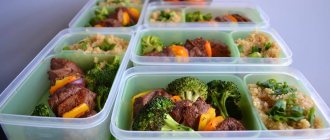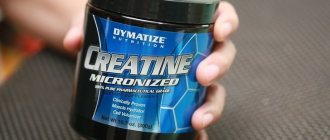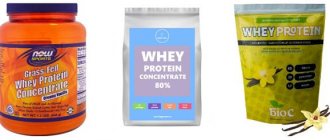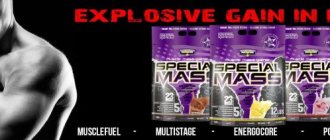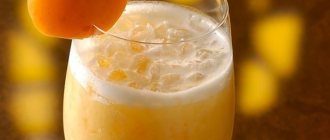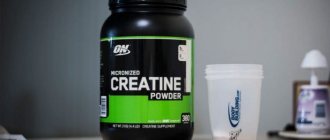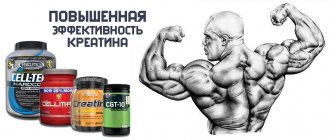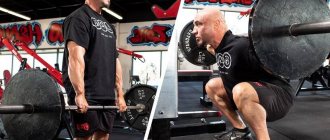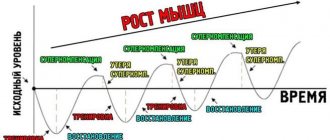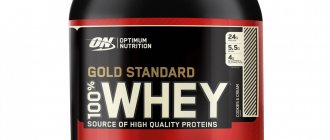Isotonics in sports in general and in bodybuilding in particular, they are used literally everywhere. Their popularity is dictated by several factors. Firstly, the isotonic drink is not tied to a specific sport, which means that literally everyone can drink it, from skiers and tennis players to cyclists and swimmers. Secondly, isotonics are not tied to gender and age, which means they can be used by absolutely any category of people, from children to the elderly, without any contraindications. Thirdly, anyone can make isotonic water with their own hands, since its composition is fundamentally simple, and the ingredients for preparation can be found in each of you at home. Today we will learn in detail what isotonic is, what it is needed for and how to prepare it.
Introduction
Isotonic drinks are sports drinks that help accelerate the recovery of an athlete’s strength after long and intense workouts. Isotonics, as a rule, contain sugars and salts in a proportion that is closest to the concentration of these components in the body. Intense physical exercise causes the body to lose moisture, as well as salts dissolved in the fluid. An isotonic drink is used to replenish these losses, and in some cases, also to replenish glycogen reserves. In medicine, for example, rehydrants are used for a similar purpose. One way or another, the main task of isotonics is to restore electrolyte balance in the athlete’s body.
You can often hear questions about, for example, which isotonic drink is best for running? Or, for example, which isotonic drink is better for swimming? Or which isotonic drink is better for bodybuilding and so on. At this stage, we have already found out that the main task of this drink is to eliminate the deficiency of wasted liquid. Based on this fundamental statement, we can say with confidence that isotonic drink is suitable for athletes, regardless of the sport they engage in. The base of isotonic drinks almost always remains identical. The only difference is the additives that are mixed into the main composition, which we will discuss further, and in some detail. Thus, isotonic drinks are suitable for absolutely all athletes.
Description of isotonic
Product: isotonic
Description: regardless of the form of manufacture, this product in its finished form is a liquid or gel with a characteristic color, taste and smell.
Purpose: the main task of isotonic is to eliminate the deficit of fluid expended by the body during physical activity.
Components: fast carbohydrates, vitamins, minerals, micro and macroelements, among which the most common are potassium, calcium, magnesium and sodium.
Application: isotonics are successfully used by representatives of absolutely all sports, for strength, agility, speed, endurance and more.
Contraindications: isotonic drinks are not recommended for use in case of metabolic disorders, as well as the presence of heart failure.
Side effects of isotonic: the most common side effect is indigestion, as well as nausea and diarrhea.
Isotonic overdose: in case of overdose, a headache may develop, which is most often the result of disturbances in electrolyte metabolism.
Release form of isotonic: isotonics are most often produced in liquid form and a little less often they can be found in the form of powder, capsules, tablets and gel.
Varieties: sports drinks are usually divided into three categories according to the degree of their impact - isotonic, hypotonic and hypertonic.
Manufacturing method: the manufacturer adds dyes and flavors to the finished dry powder concentrate, which are then diluted with water.
Shelf life: depending on the form of release, the isotonic drink can be stored for 1 year if all necessary conditions are met.
How to take it correctly
In order for your body to get the maximum benefit from drinking an isotonic drink, you need to drink it according to a certain pattern. Don't drink isotonic drinks just to quench your thirst.
Drink the drink correctly throughout the workout (3-4 sips every 10-15 minutes).
The amount of isotonic fluid drunk should match the amount of water and salts lost through urine and sweating. The amount of moisture lost during physical activity is determined by weighing yourself naked before and after exercise. The difference in weight will indicate the required fluid level.
How to drink an isotonic drink in accordance with the sports direction and intensity of the load:
- Professional athletes are recommended to drink about 1 liter of drink per hour;
- The intake rate for amateurs is 0.5 liters for one hour;
- In those sports that are accompanied by a load on the heart, you should consume 0.25 liters of isotonic water before the start of training and gradually during physical activity when you feel thirsty;
- During strength training, you must regularly drink 2-3 sips of isotonic fluid at regular intervals, without waiting for thirst to set in.
- 20 minutes after the end of classes, the remaining portion of the drink is drunk to restore the disturbed mineral and vitamin balance.
When using isotonic drink, follow the instructions. Do not take more than 3 servings of the product per day.
THESE ARTICLES WILL HELP YOU LOSE WEIGHT
Your feedback on the article:
Mechanism of action of isotonics
Systematic physical activity in any case, whether you like it or not, leads to minor fluid loss by the body. When you exercise, you sweat, and sweat, when released, also removes salts that we need to maintain a stable electrolyte balance. However, the danger lies not only in this. The loss of fluid and the removal of salts along with them lead to an increase in the concentration of plasma elements, and this, in turn, significantly reduces the composition and quality of the blood. First of all, this is manifested in an increase in its viscosity, which leads to excess load on the cardiovascular system and, as a result, impedes oxygen exchange. Cells receive less oxygen and performance during training is significantly reduced.
Thus, we logically come to the conclusion that the loss of even a small amount of fluid by the body (literally 3-5%) can already provoke a disruption in performance, which in turn will reduce the quality of training. And rapid breathing and heartbeat, plus increased sweating, make a negative contribution to the balance of electrolytes, which shifts towards their deficiency. The fact is that these electrolytes are incredibly important for the stable functioning of all internal organs and systems. And it is to maintain their balance at the proper level that isotonic sports drinks were invented. Their purpose is to maintain the acid-base balance and provide the body with fluid with the necessary composition of sugars and salts.
Action, composition and scientific research
Isotonics contain a complex of mineral salts and carbohydrates in the same proportion as they exist in blood plasma. Once in the digestive tract, they are gradually absorbed and harmoniously replenish the lack of fluid and electrolytes. Due to monosaccharides, isosmotic drinks replenish glycogen reserves. Most often, the composition of a sports drink includes sodium and potassium salts, which are necessary to maintain the normal functioning of body cells, as well as calcium and magnesium. To replenish the athlete's energy balance, fast carbohydrates are used in combination with vitamin C.
Research from the University of Edinburgh in Scotland showed an average increase in endurance performance in adolescent athletes aged 14 to 18 years by a quarter. Isotonics helped maintain normal hydration of the body, which, in turn, is the main condition for the functionality of muscles and nervous tissue.
Iso-osmotic drinks are not considered doping and are allowed for use during competitions, marathons, cross-country skiing, cycling and other professional sports activities.
Types of isotonics
As mentioned earlier, sports drinks are generally divided into the following three categories: isotonic drinks, hypertonic drinks and hypotonic drinks. Let's take a closer look at their descriptions and find out how they differ from each other.
- Isotonic drinks. They are the most common type of sports drink. Their composition is rich in all the necessary ingredients that are easily absorbed by the body, both before and during training and even after its completion.
- Hypertonic drinks. Their composition is distinguished by a richer content of salts and including sugars, compared to other representatives of sports drinks. A characteristic feature is their ability to compensate for increased energy consumption with glucose.
- Hypotonic drinks. This type of sports drink is characterized by a reduced content of sugars and electrolytes, which, by and large, allows you to avoid excessive intake of carbohydrates into the body, which can lead to the development of excess weight.
In fact, this information allows us to confidently say that isotonic drinks significantly help athletes train longer and more intensely, without the risk of developing dehydration, which could lead to cramps.
Simple isotonic
You need the following ingredients:
- 20 grams of sugar or even better - honey,
- 30 ml of some citrus juice - it’s good if lemon, grapefruit or orange,
- a pinch of salt - sea salt, iodized,
- 400 ml water.
The water you take to prepare isotonic water should be warm. Just add a little bit of it first to dissolve the salt and the sweet ingredient (sugar, honey, and by the way, you can try fructose instead).
Then gradually add cold water to this composition in the required volume, and then mix. And make isotonic drink tastier - with juice.
Research on isotonics
In the course of studying the effects of isotonic drinks on the athlete’s body, scientists were able to establish that the group of people who consumed these sports drinks, at the end of the experiment, showed a higher level of performance, which was 25% higher than that of the control group, which did not drink isotonic drinks. At the same time, a study that was conducted on another group of athletes indicated that drinking isotonic drinks had absolutely no effect on speed performance. That is, the course of electrolytic reactions under the influence of isotonic components occurs in the same way, regardless of the specifics of physical activity, which means that it does not significantly improve athletic performance.
At the same time, you can often hear a whole heap of criticism regarding the benefits and effectiveness of isotonic drinks. In the scientific literature you can find a number of statements that most of the positive qualities of isotonics appear only when a number of specific conditions are met, but not in 100% of cases. For example, there is an opinion that the use of isotonics can only be justified in a situation where the total duration of the workout does not exceed one and a half hours. At the same time, it is believed that such drinks can cause a decrease in sodium concentration in the body, but only when the duration of the workout exceeds 4 hours. But in the absence of physical activity, isotonic drinks can even cause excess weight.
Composition of isotonics
The carbohydrates that the body receives from drinking isotonic drink are contained in the drink in the form of regular sugar. Its amount is most often about 5-8%. This is quite enough to replenish energy reserves. Along with carbohydrates, the drink must contain calcium, magnesium and potassium. Some components of the product are variable and depend on the manufacturer.
Supplements may contain amino acids, various minerals, and vitamins. Most isotonic drinks contain L-carnitine, which not only makes the athlete more resilient, but also activates lipolysis - fat burning. Among such products we can note Mineral Booster, produced by Power System. The company also produces another popular isotonic drink called “Isotonic Energy Drink”. This product, by the way, is one of the most popular and popular among other analogues.
The best isotonics
By and large, all commercial isotonic drinks can be divided into those containing antioxidants and those not containing antioxidants. Most of them are made on the basis of sugar or its substitutes, with the addition of vitamins, minerals and trace elements. As for sugar, its concentration in most cases ranges from 4 to 10%. As for antioxidants, flavonoids, carotenoids and various herbal extracts are most often used in sports isotonics. As for vitamins and minerals, we have already described the main ones above. Thus, we see that the typical composition of isotonics is approximately the same, regardless of the manufacturer, however, a rating of isotonics exists and looks like this.
- 1st ADE . Volume: 250 ml. Carbohydrates: 7%, sodium: 55 mg (+ phosphorus), calories: 60 kcal.
- 10 K. Volume: 250 ml. Carbohydrates: 6.3, sodium: 55 mg (+ vitamin C), calories: 60 kcal.
- Accelerade. Volume: 250 ml. Carbohydrates: 7%, sodium: 128 mg (+ protein), calories: 80 kcal.
- Allsport. Volume: 250 ml. Carbohydrates: 8%, sodium: 55 mg (+ calcium), calories: 70 kcal.
- Cytomax. Volume: 250 ml. Carbohydrates: 4-6%, sodium: 53 mg (+ magnesium), calories: 66 kcal.
- Endura. Volume: 250 ml. Carbohydrates: 6.2%, sodium: 46 mg (+ chromium), calories: 60 kcal.
- Enervitene. Volume: 250 ml. Carbohydrates: 6%, sodium: 4.5 mg (+ guar seed), calories: 60 kcal.
- Exceeded. Volume: 250 ml. Carbohydrates: 7.2%, sodium: 50 mg (+ chlorine), calories: 70 kcal.
- Ext. Volume: 250 ml. Carbohydrates: 5%, sodium: 260 mg (+ sodium chloride), calories: 45 kcal.
- Gatorade. Volume: 250 ml. Carbohydrates: 6%, sodium: 110 mg (+ phosphorus), calories: 50 kcal.
- GU 20. Volume: 250 ml. Carbohydrates: 5%, sodium: 120 mg (+ sodium citrate), calories: 50 kcal.
- Hydra Fuel. Volume: 250 ml. Carbohydrates: 7%, sodium: 25 mg (+ chromium), calories: 66 kcal.
- Performance. Volume: 250 ml. Carbohydrates: 7%, sodium: 490 mg (+ sodium), calories: 66 kcal.
- Powerade. Volume: 250 ml. Carbohydrates: 8%, sodium: 55 mg (+ chlorine), calories: 70 kcal.
- Quickick. Volume: 250 ml. Carbohydrates: 7%, sodium: 100 mg (+ calcium), calories: 67 kcal.
- Revenge Pro. Volume: 250 ml. Carbohydrates: 4%, sodium: 85 mg (+ protein), calories: 100 kcal.
- Sustained Energy. Volume: 250 ml. Carbohydrates: 11%, sodium: 37 mg (+ choline), calories: 114 kcal.
- Ultima Replenisher. Volume: 250 ml. Carbohydrates: 2%, sodium: 37.5 mg (+ choline), calories: 12.5 kcal.
Advanced do-it-yourself isotonic drink
This recipe will be more complicated:
- 20-25 small spoons of sugar,
- 3 liters of water - clean, drinking,
- 50 g glucose (powder),
- 1.5 ml magnesium sulfate (twenty-five percent),
- 10 ml of four percent potassium chloride,
- ½ small spoon of sodium bicarbonate.
Don't be intimidated by all these "tricky" names. These components are now sold in almost every pharmacy.
So, you have all the ingredients, proceed according to the same scheme as described earlier. That is, first take a little warm water, dissolve glucose and sugar in it, gradually add all the products from the pharmacy, then all this needs to be dissolved in three liters of liquid and mixed.
Which isotonic drink is better
In order to answer this question, you need to approach it from an unusual angle. At the beginning of the article, we completely analyzed the composition of a typical isotonic drink, then we gave a rating of isotonic drinks, and from this amount of information it becomes clear to us that there are virtually no significant differences in the composition of the additives. And the insignificant differences relate only to their form of release. There are several forms of release of isotonics. These are isotonics in the form of a ready-made drink, isotonics in tablets, isotonics in powder and isotonic gels. The difference here lies, by and large, only in the method of preparation and use. It cannot be said that powder is better than tablets, tablets are better than gel, or, for example, that a gel is better absorbed than a ready-made drink. The difference in shape is only in convenience.
Okay, but what recommendations should you follow in this case? In this case, the following approach should be followed. The best isotonic drink is the one that works best for you. There is such a term as “individual susceptibility” or immunity to the components of the supplement. Each person has his own level of receptor development, his own level of perception, his own metabolic characteristics, including his own stimulants of allergic reactions. Thus, in order to understand which isotonic is best for you, the only sure way is to try several different ones and evaluate your sensations. It is even possible that the best effect will be provided to you not by a purchased isotonic at all, but by one that you have made yourself.
Daily sports nutrition intake for runners:
A) Protein or protein is needed for building muscle tissue and strong immunity. Meat-eaters get protein from meat, but for vegetarian runners, its use in the form of sports nutrition is simply necessary.
B) Omega-3 speeds up metabolism, reduces inflammation in joints and ligaments, etc. We can say that omega-3 improves the general condition of the body.
B) Vitamin and mineral complexes. The balance of vitamins and minerals greatly influence the biochemical processes in the body and muscle tone, so without enough of them you will be tired, drowsy and simply will not be able to train, much less run long distances “easily and with a smile.”
Vitamins and minerals can be obtained from regular food, but for this you need to constantly monitor the composition of the diet so that it contains magnesium, calcium, potassium, iron, etc. It is better to trust professionally formulated vitamin complexes and take them on the recommendation of a doctor or according to the instructions that come with the package. The most balanced and popular sports vitamin complexes: Complivit, Opti-Men from Optimum Nutrition and Animal Pak from Universal Nutrition.
D) Amino acid complexes are elements into which protein breaks down during digestion. It is especially necessary to pay attention to the intake of amino acids for vegetarians, because their main source is meat. Amino acids are necessary for the body to recover faster after physical activity. By taking amino acids, we do part of the work of processing waste products instead of the body, so recovery is less energy-intensive than when we eat meat.
Typically, amino acids are taken by runners who do a large amount of work (accelerations, long workouts, running uphill), when they feel that their muscles are overloaded and their legs are very tired after training. Complex amino acids are available in the form of capsules or tablets.
Homemade isotonics
As we already said at the beginning of the article, preparing isotonic water at home is not at all difficult. Most sports drinks aim, first of all, to replenish fluid deficiency in the body and for this reason their composition can be as primitive as possible. Basically, all you need to make this drink is sugar and salt. If desired, you can also add lemon. However, the more saturated the composition of the drink, the more varied the effect it can have. Therefore, drinks are divided according to the complexity of preparation and purpose. At the beginning of the article, we said that there are three modifications of sports drinks - isotonic, hypotonic and hypertonic.
Homemade isotonic recipe: 1 liter of warm water, 200 ml of fruit concentrate, 50-70 g. sugar, 5 gr. salt. All this needs to be mixed and left for 1 hour in the refrigerator. Another popular recipe: 800 ml water, 200 ml fruit juice and a pinch of salt. Homemade hypotonic recipe: 1 liter of water, 100 ml of orange juice concentrate, 1 pinch of salt. Second recipe: 1 liter of water, half a squeezed lemon, a pinch of salt. Homemade recipe for hypertension: 2 liters of water, 50 ml of fruit concentrate, 120 g. sugar, 5 gr. salt. Second recipe: 1 liter of water, three quarters of a teaspoon of salt, 2 tablespoons of lemon juice, 1 tablespoon of lime juice. All these drinks are often generalized into one large category of “homemade”, so making isotonic with your own hands is not at all difficult.
Compound
In order to figure out how to prepare isotonic at home, it is worth understanding what it is and what components it includes. First of all, it is a liquid (boiled, settled, mineral without gases). Choose a pure and natural product to get maximum benefits and avoid infection.
The second component is sodium chloride. It is he who maintains the optimal volume of fluid, preventing its excessive accumulation (swelling) or loss (dehydration).
Sugar (glucose) – maintains energy potential, increases strength and endurance.
An important component of homemade tonic is honey. It is a natural source of vitamins (E, K and group B) and minerals (calcium, iron, iodine, magnesium, sodium and more).
Additionally, fruit and vegetable juices can be used. Citrus fruits, which contain ascorbic acid, a powerful antioxidant and immune system stimulant, will be especially useful.
The advantages of homemade cocktails are the absence of dyes, flavors, preservatives, artificial sweeteners, as well as substances that cause allergies or individual intolerances. This makes them much healthier, safer and more effective.
Natural isotonics
In addition to those isotonic drinks that you can buy, as well as those that you can make yourself, there are also those that occur in nature. Coconut juice, or as it is also called coconut water, is considered the best natural isotonic. In fact, this is the most common juice of young coconut fruits, that is, nuts. The whole usefulness of this juice lies in its unique balance of electrolytes, which in its composition is close to the composition of blood plasma. Due to this beneficial property, not so long ago, coconut water was used during military operations by doctors and surgeons as a means to restore the normal volume of circulating blood in the body. That is, wounded soldiers with blood loss were recommended to drink coconut juice.
As you know, many areas of training, physical exercise and rehabilitation manipulations came to the field of fitness precisely from the army and military craft. Coconut juice was no exception. Its beneficial effects on electrolyte balance and blood volume have led experts to recommend it to training athletes. So, over time, this natural isotonic has gained enormous popularity in the USA, then in Europe, and then throughout the world. In addition to isotonic properties, coconut juice also has low calorie content, zero fat and cholesterol, and a high concentration of potassium, which, in the complete absence of sugars, promotes weight loss, including due to the presence of lauric acids.
Who needs isotonics and how to make it effective?
Isotonic drinks are indicated not only for athletes, but also for people whose activities or condition are associated with active sweating, for example, workers in hot shops or patients suffering from fever.
Isotonic helps restore water-salt balance and avoid negative health consequences that arise from dehydration.
The highest effectiveness from sports drinks can be achieved if you consume them according to the following scheme: 250 ml 20 minutes before the start of training, and then 125 ml every 15 minutes during intense physical activity.
If the goal of training is to lose weight, it is better to avoid isotonic drinks.
When gaining muscle mass, you should not drink this drink in one gulp. The glucose in its composition will lead to the release of large amounts of insulin, which, under significant loads, will force the body to break down not only fats, but also muscle cells to obtain the amino acids necessary for metabolism.
